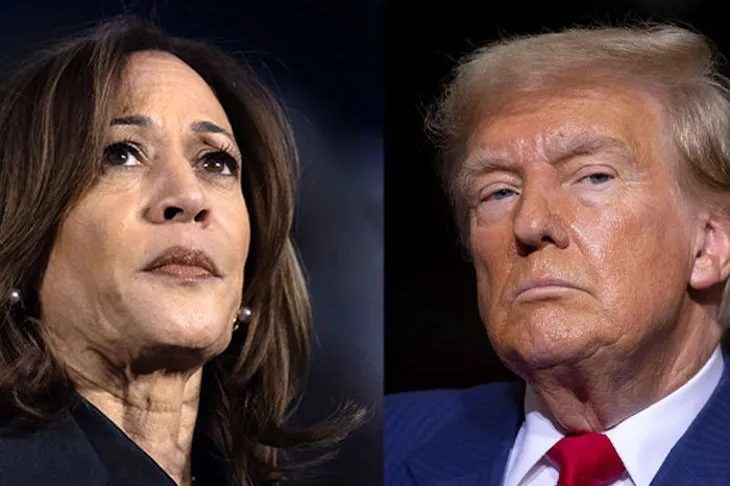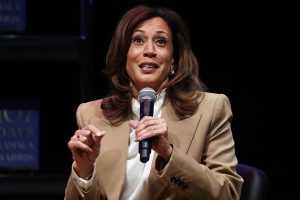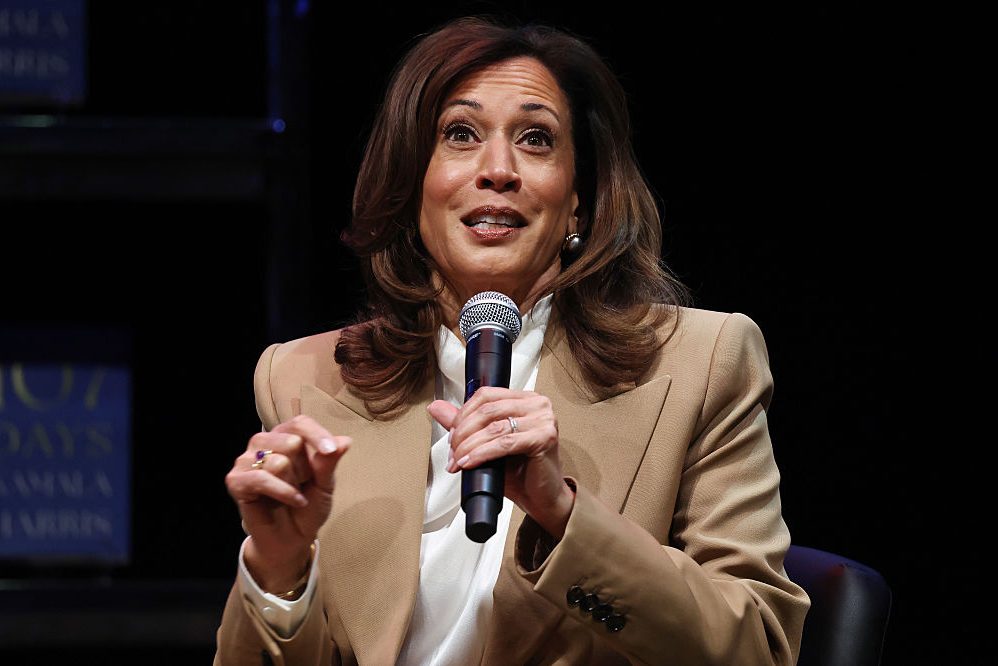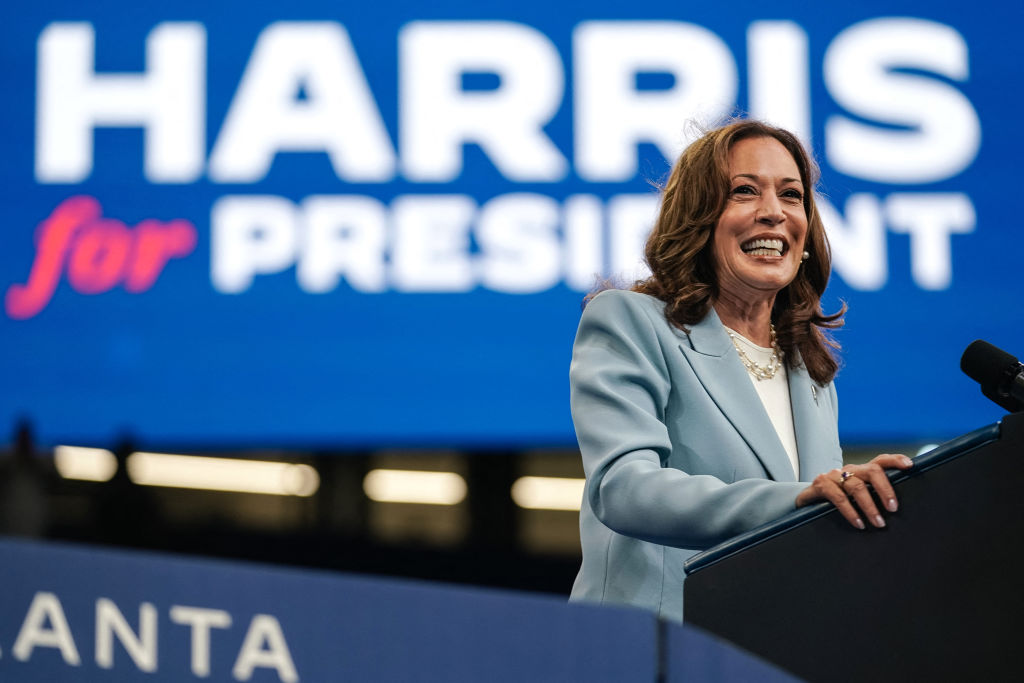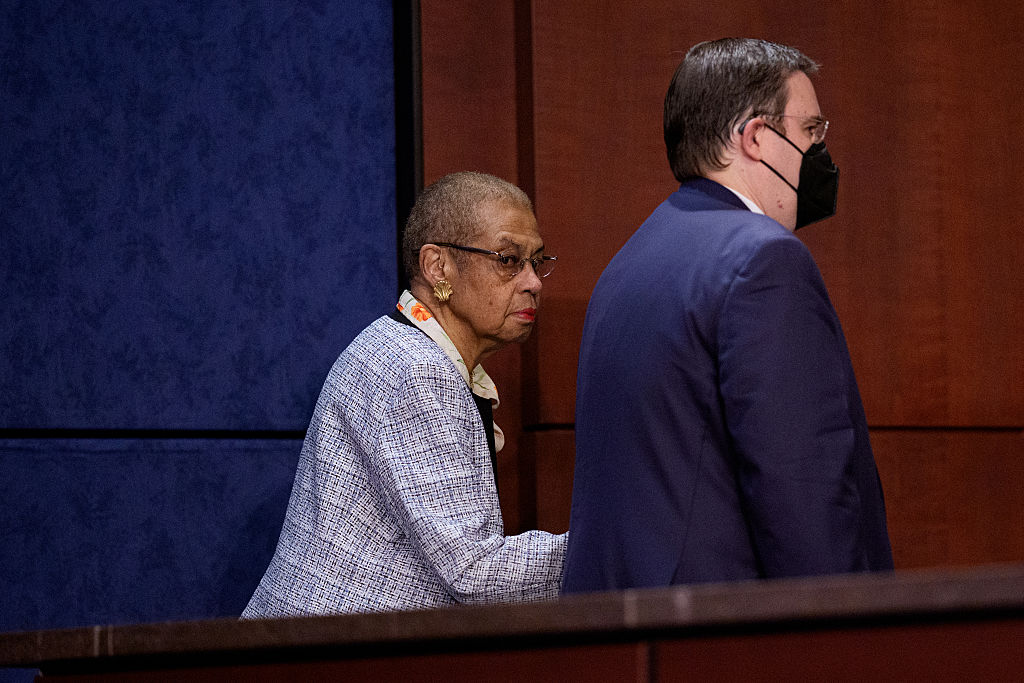What can the 2020 and 2016 elections, the previous votes in which Donald Trump was the Republican nominee, tell us about today’s race for the White House?
There are three layers to a presidential election, only two of which really matter. The overall “popular” vote only counts for bragging rights. Trump has never won it. The popular vote in individual states, however, is the critical second layer of the election. Trump won the 2016 election because he eked out slender popular pluralities in Pennsylvania, Michigan, Wisconsin and Arizona — four states that are battlegrounds this year as well — and in Florida, which since 2000 had been the biggest prize on the map where the winner couldn’t be taken for granted.
Trump’s best chance is to break that ‘blue wall’ of Democratic-leaning states
The third layer of the election is the arcane institution known as the Electoral College. Few Americans know much about how it works, and when anyone dares to challenge its workings — as Trump did when he called on his vice president, Mike Pence, not to “certify” the results of the Electoral College vote on January 6, 2021 — there’s the potential for chaos or a constitutional crisis. But under normal circumstances, the Electoral College replicates the results of the popular vote in each state. The candidate who wins a state’s popular vote wins its electors. (Except in Maine and Nebraska, where the electors are distributed by congressional district, but that hasn’t yet mattered in any presidential contest.)
The Electoral College has the final say in who becomes president: an absolute majority of the 538 electors is needed to win. In the event of a tie — which has happened a few times but not in more than a century — the House of Representatives picks the president, although the way they pick is more complicated than anybody would guess. Fortunately, the Electoral College’s intricacies don’t matter for today’s popular voting in the states.
Joe Biden won in 2020 by flipping almost all the states that had been critical to Trump in 2016. Biden won Pennsylvania, Michigan, Wisconsin and Arizona. Florida had become solidly Republican in the intervening years, but Biden pulled off a shocking upset in the southern state of Georgia, which no one thought was in play. Of course, Hillary Clinton didn’t think states like Michigan and Wisconsin were in play when she lost, either. If the last two presidential elections could produce surprises in states that hardly anyone thought could be competitive, that can happen this time, too.
In fact, on Saturday, a startling poll of Iowa — normally a reliably Republican state — showed Kamala Harris up three points over Trump, thanks to a huge lead with women. Today’s presidential election is the first to be held since the Supreme Court’s Dobbs ruling, which widened the power of states to restrict abortion. Harris has made abortion rights central to her campaign. It might just be enough to put her over the top, possibly even in a state like Iowa. The important thing is not how much weight Iowa carries in the Electoral College — very little — but the likelihood that if Iowa surprises Trump, other states will too, and Harris will easily win most of the bigger states that are considered battlegrounds.
But one poll, especially one with a margin of error higher than 6 percent, isn’t a very good predictor either of what will happen in Iowa or the race as a whole. It’s only a warning to Trump that Harris’s investment in women, which has extended to courting Republican women, might pay off. Hillary Clinton expected that the prospect of putting a woman in the White House would be enough to get an overwhelming number of women to vote for her, and she was wrong. But Harris is a woman running post-Dobbs, and there has been a glaring “gender gap” favoring Harris among female voters. The trouble for Harris is there’s also a gender gap on the other side, with men solidly preferring Trump.
As in the last two presidential elections, Pennsylvania, Michigan, Wisconsin and Arizona could go either way. Biden’s winning percentages in these states in 2020 were about as slim as Trump’s winning numbers were in 2016. Polling in all of them shows a tight race, though Arizona looks quite good for Trump. The other three are virtual toss-ups.
Then there’s Georgia, and also North Carolina. Trump’s defeat in Georgia four years ago can be attributed to carelessness, or even self-sabotage, as Trump had antagonized the popular Republican governor of the state, Brian Kemp. That internecine feud died down as today approached, however, and polls now suggest Trump has a small lead there. But North Carolina is more worrying — Trump won it twice before, but the state gave him his smallest winning percentage in 2020, and Trump is on the Republican ticket this year alongside a candidate for governor, Mark Robinson, who is even more prone to scandal and outrageous remarks than Trump is.
If Trump can win Arizona, Georgia and North Carolina, however, he would be within striking distance of overall victory. He would just need one more large or medium-sized state, and the polls give him even odds in three such states — again, Pennsylvania, Michigan, and Wisconsin. He’d only need to win one of those three coin flips, and he’s re-elected.
Election Day could turn into weeks or months of legal wrangling
Assuming, that is, he doesn’t slip up in North Carolina, and that his slight polling leads in Arizona and Georgia actually hold up. If he loses North Carolina or Georgia, he would have to make it up by winning two of the coin flips: any two-state (or three-state) combination of (say it again) Pennsylvania, Michigan and Wisconsin — three states historically known as industrial centers. Trump’s talk of tariffs and protecting American manufacturing is a pitch to those three.
And lastly there’s Nevada, a state Trump has never won before, but polls now say he’s in the lead there, if not by much. Nevada is something of a back-up state for Trump. It doesn’t count for much in the Electoral College, and most of his paths to victory don’t require winning Nevada. There are reasons for the Republican to be cautious about his prospects, despite what the polls say. The state has a very strong, and very Democratic, organized-labor presence, as well as a highly efficient state Democratic Party political machine built by the late Sen. Harry Reid. As a Western state that keeps counting — and even accepting — mail-in ballots after Election Day, Nevada’s results might not be known for days or longer. Such delays, and the state’s mob history, don’t inspire ironclad trust in the vote counting.
Although Trump’s margins in the critical states were small in 2016, and Biden’s were similarly exiguous in 2020 — and polls show them all to be close again this time — it’s most likely that the election will be settled by a ripple, if not a wave: the battleground states will tend to vote as a cluster, much as they did in the last two showdowns. It’s possible there will be two separate ripples, though, with Trump winning the more Republican-leaning battlegrounds of Georgia, Arizona, and North Carolina and Harris taking the Democratic-leaning states of Pennsylvania, Michigan and Wisconsin, in which case Harris would almost certainly also win the White House. Trump’s best chance is to break that “blue wall” of Democratic-leaning states. Pennsylvania, with its nineteen Electoral College votes, is the grand prize.
Trump has made forays into more challenging territory too, however. He held one of his last rallies in Virginia, a state that should be almost as solid for a Democrat as Iowa is meant to be for Republicans. But Virginia is a peculiar state, home to much of the federal bureaucracy yet also a state with a significant population of rural white Democrats who just might prefer Trump over their own party’s nominee. The victory of the Republican Glenn Youngkin in the state’s 2021 governor’s election — one of the country’s first major contests after the 2020 presidential race — showed that Virginia can still deliver impressive results for Trump’s party. If Trump is doing better than expected in Virginia early in the evening, it may not be a sign that he will win there, but it will suggest he has momentum that could carry him to a series of successes, and possibly ones, in the battleground states.
The nightmare scenario for Democrats is that Trump not only wins the states he needs to become president, but he also wins the national popular vote
The nightmare scenario for Democrats is that Trump not only wins the states he needs to become president, but he also wins the national popular vote. This would give Trump a symbolic legitimacy he has never had before, and it would mean Democrats had utterly failed to discredit him, despite all the scandals dogging Trump. A nationwide popular vote win for Trump, or winning by big margins in the battleground states, would be a humiliation for the Democrats as a party, not just for Kamala Harris. It would also probably mean that Republicans will increase their majority in the House of Representatives and build a significant majority in the Senate. Trump would be more powerful than ever.
Trump exceeded his poll numbers in both of his earlier elections, the one he lost in 2020 as well as the one he won in 2016. If the polls this year are off again to the same degree, Trump will probably win the popular vote as well as the battleground states. (A nightmare scenario for Republicans, however, is one in which he wins the popular vote overall but falls short in the critical states.)
Four years ago, Trump practically crippled his own re-election campaign by discouraging his supporters from voting early or voting by mail — in the midst of the Covid-19 lockdowns. Democrats swamped the Republicans in the early and mail-in votes. This was one of the things that led Trump to reject the election results: based only on Election Day voting, Trump appeared to have won, or at least to have come within a few recounts of possibly winning. After Election Day, as votes were fully tallied, Trump’s narrowest wins and nearest misses turned into definite defeats unlikely to be revised by any recount.
This year Republicans have made up much of their deficit in the early and mail-in voting — the question now is how much that subtracts from their Election Day in-person vote. Trump’s campaign is also attempting, in coordination with independent allied organizations, to implement new strategies for getting votes to the polling stations today, with an emphasis on “low-propensity voters” who are not in the habit of voting regularly or may never have voted before. Harris has a far more orthodox strategy and more campaign workers in the field “door-knocking,” asking residents in neighborhoods known to yield votes to cast their ballots for the Democrat. In addition to all the other uncertainties of this race, it’s a trial run of two quite different mobilization operations.
Have pollsters this cycle corrected for the undercounting of Trump’s support that was a scandal to the profession in 2020 and 2016? Is Harris cleaning up with late-deciding voters? Are Republican women casting Harris ballots to secure abortion rights or rebuke Trump’s bad behavior? Or are working-class men, including an increased share of black and Latino men, going to turn up and give Trump his greatest glory yet? Even with signs of Trump doing better than in his last two elections, there are reasons the experts still don’t know what to make of this race in its final hours. Let’s just hope we do know who the next president will be before the day is out. Otherwise, Election Day could turn into weeks or months of legal wrangling.
Listen to Freddy Gray and Daniel McCarthy on the Americano podcast. This article was originally published on The Spectator’s UK website.



